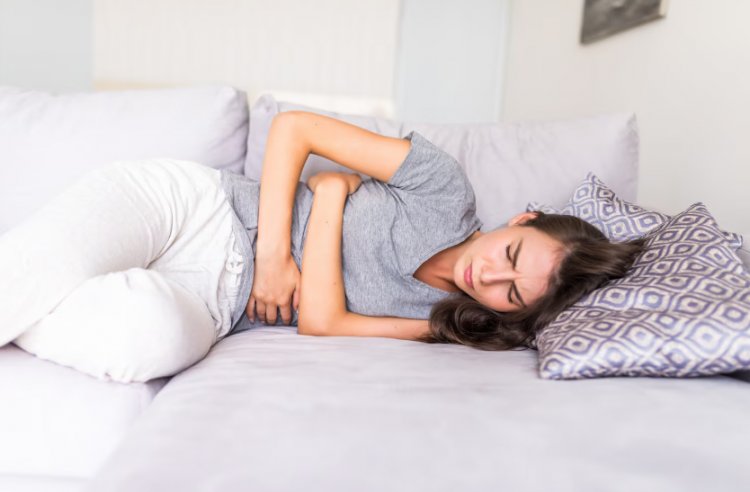Understanding Menstrual Cramps: Causes, Symptoms, and Management
Menstrual cramps, also known as dysmenorrhea, are a common occurrence among menstruating individuals. These cramps typically occur just before or during menstruation and can range from mild discomfort to severe pain. While they are often considered a normal part of the menstrual cycle, for some individuals, menstrual cramps can be debilitating and interfere with daily activities. In this article, we will explore the causes, symptoms, and management strategies for menstrual cramps.

Causes of Menstrual Cramps:
Prostaglandins
These hormone-like substances play a crucial role in regulating inflammation and pain in the body. During menstruation, the uterine lining releases prostaglandins, which trigger strong contractions of the uterine muscles to help expel the lining. Higher levels of prostaglandins are associated with more severe menstrual cramps.
Hormonal Imbalances
Fluctuations in estrogen and progesterone levels throughout the menstrual cycle can affect the intensity of menstrual cramps. Higher levels of estrogen can lead to increased production of prostaglandins, while lower levels of progesterone can result in more intense uterine contractions.
Endometriosis
This is a condition where tissue similar to the uterine lining grows outside the uterus. During menstruation, the displaced endometrial tissue can become inflamed and cause severe pain and cramping.
Uterine Fibroids
These noncancerous growths in the uterus can cause symptoms such as heavy menstrual bleeding and pelvic pain, including menstrual cramps.
Adenomyosis
Similar to endometriosis, adenomyosis involves the abnormal growth of endometrial tissue. However, in adenomyosis, the tissue grows into the muscular wall of the uterus, leading to painful and heavy periods.
Symptoms of Menstrual Cramps:
-
Primary Dysmenorrhea: This refers to menstrual cramps that occur without an underlying medical condition. Symptoms typically start shortly before or at the onset of menstruation and may last for 1-3 days. Primary dysmenorrhea usually improves with age or after childbirth.
-
Secondary Dysmenorrhea: Unlike primary dysmenorrhea, secondary dysmenorrhea is caused by an underlying medical condition such as endometriosis, uterine fibroids, or adenomyosis. The pain associated with secondary dysmenorrhea may be more severe and persistent, and it often worsens over time.
-
Pain Severity: The severity of menstrual cramps can vary widely, ranging from mild discomfort to debilitating pain that interferes with daily activities. Some individuals may experience consistent, dull aches, while others may have sharp, stabbing pains.
-
Duration of Symptoms: Menstrual cramps typically occur just before or during menstruation and subside within a few days. However, for some individuals, the pain may persist for longer periods or occur throughout the menstrual cycle.
-
Associated Symptoms: In addition to pelvic pain and cramping, individuals with menstrual cramps may experience other symptoms such as nausea, vomiting, diarrhea, constipation, headache, and fatigue.
Management of Menstrual Cramps:
Pain Relief Medications
Over-the-counter nonsteroidal anti-inflammatory drugs (NSAIDs) such as ibuprofen, naproxen, or aspirin can help alleviate pain and reduce inflammation associated with menstrual cramps. These medications work by inhibiting the production of prostaglandins.
Hormonal Contraceptives
Birth control pills, patches, or hormonal intrauterine devices (IUDs) can help regulate hormonal fluctuations and reduce the severity of menstrual cramps. They may also help lighten menstrual flow and regulate menstrual cycles.
Heat Therapy
Applying heat to the lower abdomen or lower back can help relax the uterine muscles and alleviate cramping. Heat packs, heating pads, warm baths, or hot water bottles can provide relief.
Exercise
Regular physical activity, such as walking, swimming, or yoga, can help reduce the severity of menstrual cramps by improving blood circulation and releasing endorphins, which act as natural pain relievers.
Dietary Changes
Consuming a balanced diet rich in fruits, vegetables, whole grains, and lean proteins can help reduce inflammation and improve overall menstrual health. Avoiding excessive caffeine, alcohol, and salty foods may also help alleviate menstrual cramps.
Stress Management
Practicing relaxation techniques such as deep breathing, meditation, or progressive muscle relaxation can help reduce stress levels and alleviate muscle tension, thereby easing menstrual cramps.
Alternative Therapies
Some individuals find relief from menstrual cramps through alternative therapies such as acupuncture, acupressure, herbal supplements, or dietary supplements like magnesium or omega-3 fatty acids. However, it's essential to consult with a healthcare provider before trying any new treatment.
In summary, menstrual cramps are a common and often uncomfortable symptom experienced by menstruating individuals. While they can be challenging to manage, understanding the underlying causes and implementing effective management strategies can help alleviate symptoms and improve overall quality of life. If menstrual cramps are severe or significantly interfere with daily activities, it's essential to seek medical advice for proper diagnosis and treatment.
Discover Coupoly's exclusive Medical Concierge Service, connecting you with renowned doctors and clinics, whether in the UK or abroad.
Get in Touch
Disclaimer:
The information provided in this article is for educational purposes only and should not be considered medical advice. If you have any health concerns or are experiencing symptoms, it is important to consult with a healthcare professional, such as a doctor or clinic, for proper diagnosis and treatment. Always seek the advice of your doctor or other qualified health provider with any questions you may have regarding a medical condition. Do not disregard professional medical advice or delay in seeking it because of something you have read in this article.
What's Your Reaction?





















